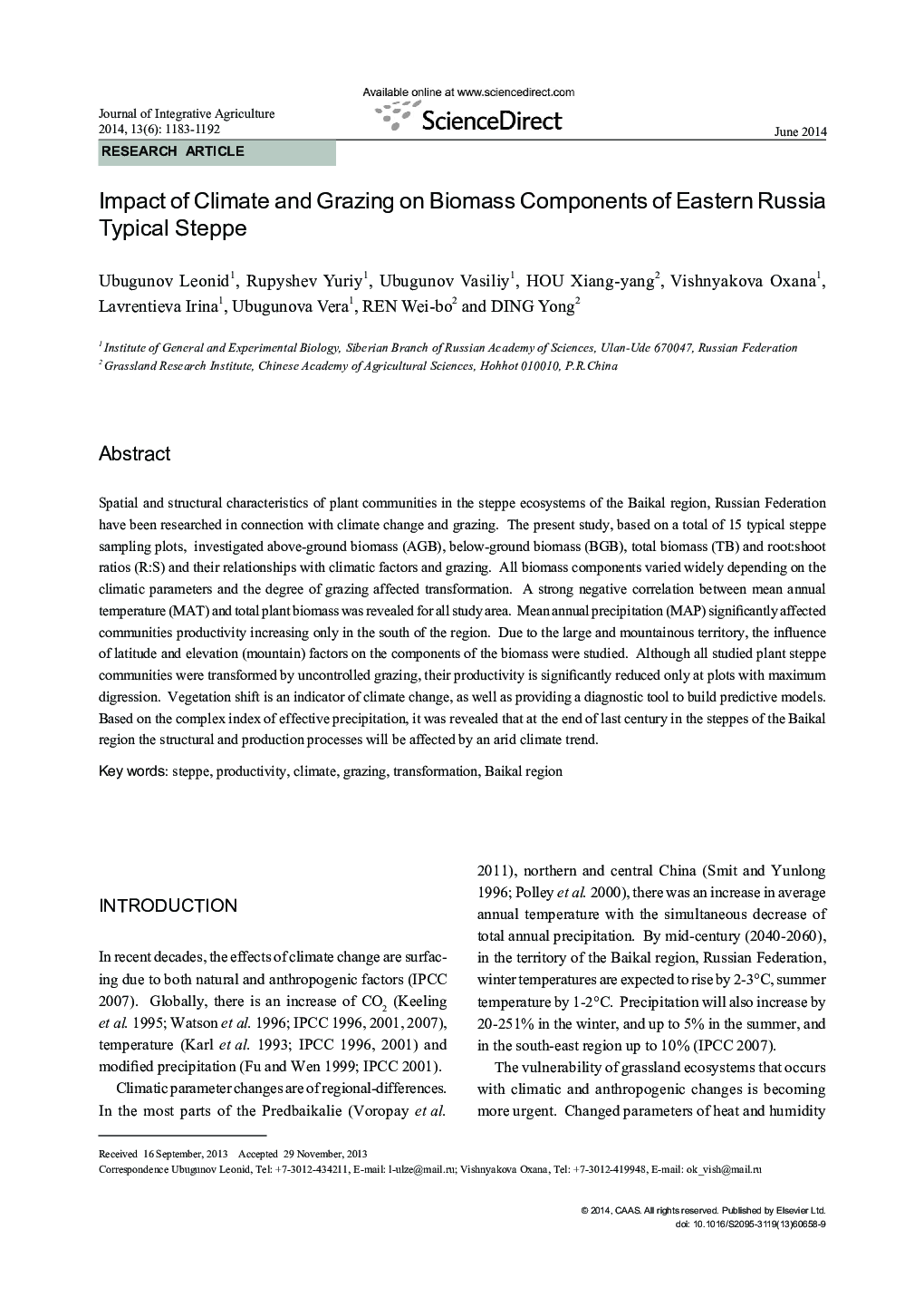| Article ID | Journal | Published Year | Pages | File Type |
|---|---|---|---|---|
| 4494540 | Journal of Integrative Agriculture | 2014 | 10 Pages |
Spatial and structural characteristics of plant communities in the steppe ecosystems of the Baikal region, Russian Federation have been researched in connection with climate change and grazing. The present study, based on a total of 15 typical steppe sampling plots, investigated above-ground biomass (AGB), below-ground biomass (BGB), total biomass (TB) and root:shoot ratios (R:S) and their relationships with climatic factors and grazing. All biomass components varied widely depending on the climatic parameters and the degree of grazing affected transformation. A strong negative correlation between mean annual temperature (MAT) and total plant biomass was revealed for all study area. Mean annual precipitation (MAP) significantly affected communities productivity increasing only in the south of the region. Due to the large and mountainous territory, the influence of latitude and elevation (mountain) factors on the components of the biomass were studied. Although all studied plant steppe communities were transformed by uncontrolled grazing, their productivity is significantly reduced only at plots with maximum digression. Vegetation shift is an indicator of climate change, as well as providing a diagnostic tool to build predictive models. Based on the complex index of effective precipitation, it was revealed that at the end of last century in the steppes of the Baikal region the structural and production processes will be affected by an arid climate trend.
